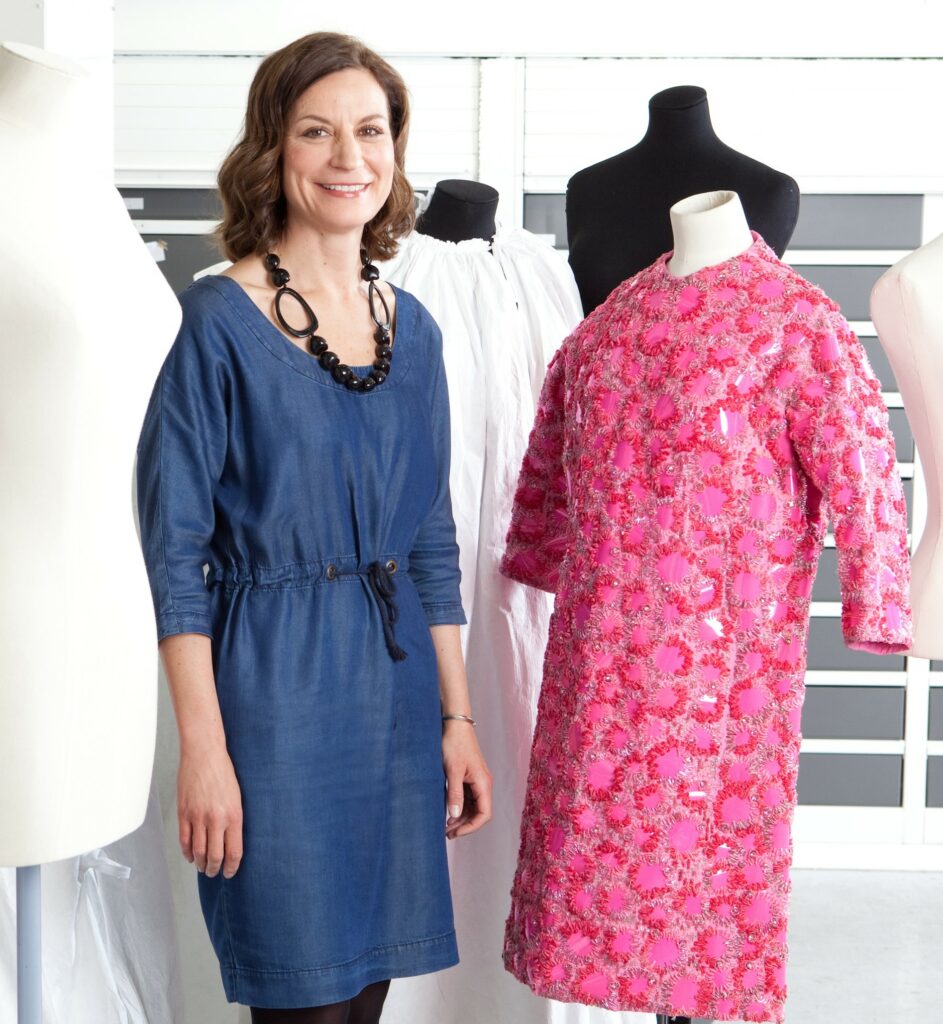A Take on Fashion: Sonnet Stanfill

Sonnet Stanfill is Senior Curator of Fashion at London’s Victoria and Albert Museum (V&A). Her exhibitions include New York Fashion Now (2007), the co-curation of Ballgowns: British Glamour Since 1950 (2012) and The Glamour of Italian Fashion (2014).
What is a trend or item that reflects women’s style at this point in time?
With Covid-19 affecting everyone almost everywhere, the scale of the crisis and the attendant economic deep-freeze have made consumers more discerning and purchases more considered. As humans, we respond on an emotional level to resonant design stories of community and craftsmanship; like many things, this dynamic started before the pandemic and has simply accelerated. What’s compelling in fashion now? The quest for two types of storytelling: international on the one hand, and hyper-local on the other.
The Fall-Winter 2020 collaboration of LVMH-owned Loewe with ceramicist Takuro Huwata exemplifies collaboration across continents. From his studio in Toki City, Gifu, Huwata created the densely glazed ceramic plates and pendants that were incorporated into the Spanish brand’s dresses and accessories. Loewe’s creative director Jonathan Anderson, who collects the ceramicist’s work, cited his creative intention to ‘bring the emotion and the human touch back into fashion.’
For the independent London-based Phoebe English, a deep commitment to local sourcing has become a means to reversing climate change. English’s Fall-Winter 2020 collection, Nothing New, was made entirely of unused fabrics donated by or purchased from London fashion houses. Spring-Summer 2021, titled ‘Nothing New, Part 2’ moved even further towards the hyper-local with dyes made from donated vegetable waste and acorns from nearby parks.
Fashion brands and makers outside of the major transatlantic fashion hubs provide further inspirational examples. From its base in Lagos, Adebayo Oke-Lawal’s decade-old fashion brand Orange Culture proactively supports Nigerian industry. Its collections infuse universal silhouettes with what it calls ‘an African touch’ mixing Nigerian inspired textile prints, saturated color and contemporary streetwear elements. With its collections manufactured in Lagos from ethically-sourced fabric secured from local suppliers, Orange Culture exemplifies the hyper-local business model. A further example is provided by the American denim label Raleigh Jeans. Located in the heart of downtown Raleigh, North Carolina, the owners buy their denim from a factory a short car ride away. A green shoot of hyper-local optimism in the face of the near disappearance of the region’s once mighty textile industry.
How can fashion as a form of individual and free expression play a role in our changing societies?
Fashion is such a multi-purpose consumer product! Beyond providing practical protection from the elements, clothing can signal both solidarity and belonging, as well as protest and individual expression. In our rapidly changing societies, what we wear can be a powerful tool to express and embody our creativity and identity, our beliefs and our aspirations. I think people understand more than ever the power we wield as consumers; this too is a form of personal expression and agency.
How does the current crisis impact people’s relationship with clothing and fashion?
A colleague once described fashion as “the human thirst for novelty.” In this year of crisis, in the face of hardship and loss, for many people, fashion has unsurprisingly taken a back seat. But fashion history reminds us of the constant re-embrace of fashion’s optimistic promise of change and even reinvention when societies emerge from periods of upheavals.
The UK’s chief economist, Andy Haldene, recently described Britain’s economy as “a coiled spring” of pent-up demand. Will Haldene’s analogy prove to be correct? If so, as vaccination programs gather momentum and lockdown measures ease, the deferred consumer desires of those with disposable income could ignite a joyous re-embrace of fashion’s promise.



